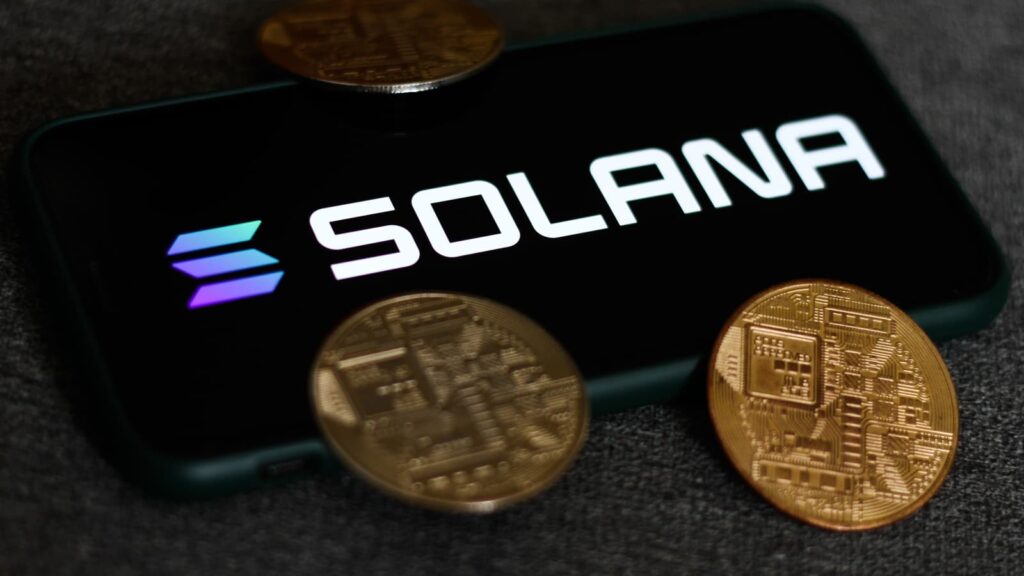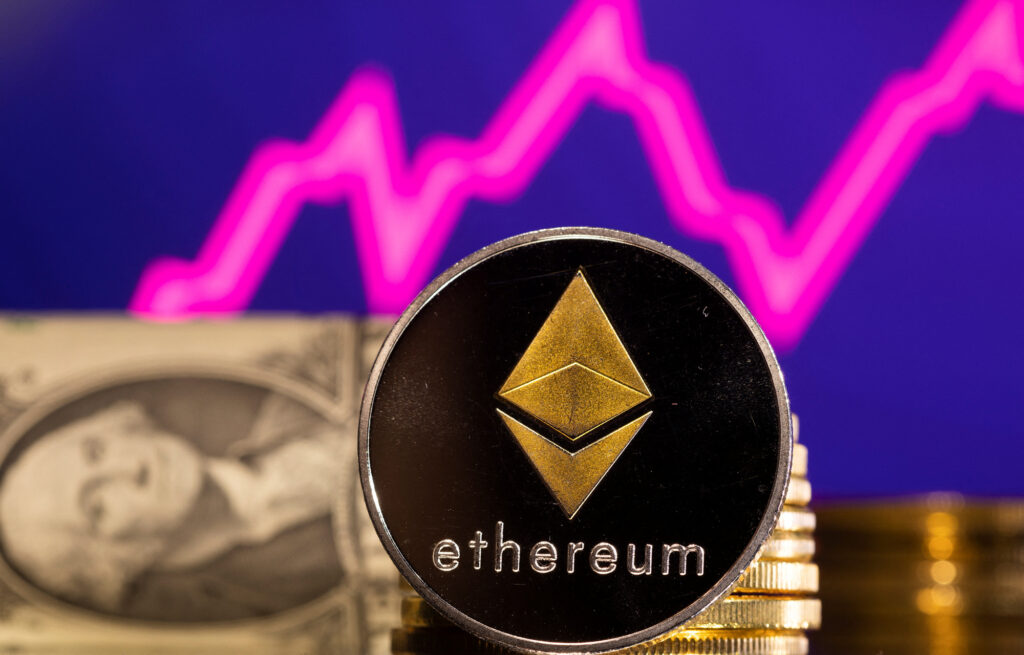Bloomberg’s senior litigation analyst, Elliott Stein, has expressed confidence in cryptocurrency exchange Coinbase’s chances of success in its ongoing lawsuit against the United States Securities and Exchange Commission (SEC).
Stein has estimated a 70% probability that Coinbase will secure a complete dismissal of the lawsuit.
In a recent post on Jan. 19, shared on a platform formerly known as Twitter, Stein initially believed that Coinbase would likely be able to challenge certain SEC claims but might struggle with allegations related to its staking rewards program and overall operational structure.
However, after a five-hour hearing, his perspective shifted dramatically:
“When I entered the SEC v. Coinbase hearing, I thought that COIN would probably succeed in dismissing SEC’s primary claims regarding trading, but perhaps not those related to staking and broker claims. After leaving the hearing,
I was convinced that COIN would achieve a full dismissal.”
The SEC’s accusations revolve around Coinbase’s practice of staking customer assets, earning rewards on their behalf, and returning them.
The SEC argues that this constitutes offering and selling investment contracts, subjecting Coinbase to SEC regulations.
Additionally, the SEC alleges that Coinbase was functioning as an unregistered broker, a claim vehemently denied by the exchange, which argued that there is no straightforward process for crypto exchanges to obtain licenses.
READ MORE: U.S. Regulators Investigate Debiex Exchange for Alleged Romance-Driven Crypto Swindle
Stein highlighted a pivotal moment when Coinbase provided a more precise definition of an “investment contract” than the SEC:
“I found Coinbase’s definition more convincing, requiring an investment in a business rather than merely an ecosystem, accompanied by an enforceable obligation.”
Stein also drew parallels to the SEC vs. Ripple case, where Ripple achieved a partial victory in July 2023.
The judge ruled that XRP is not considered a security when it comes to retail sales on cryptocurrency exchanges. Stein suggested that this ruling could have a ripple effect on Coinbase’s lawsuit:
“As the Ripple ruling in July suggested, digital asset sales on public exchanges do not neatly align with the Howey test for determining investment contracts.”
On Jan. 17, U.S. District Judge Katherine Polk Failla heard arguments from both the SEC and Coinbase during a lengthy five-hour session.
Notably, Judge Failla questioned SEC attorneys about why a digital token issuance would satisfy the Howey test, implying that the case’s scope might be too broad.
The SEC initiated the lawsuit against Coinbase on June 6, 2023, alleging that the exchange had violated federal securities laws by listing 13 tokens as securities, including Solana (SOL), Cardano (ADA), Polygon (MATIC), Filecoin (FIL),
The Sandbox (SAND), Axie Infinity (AXS), Chiliz (CHZ), Flow (FLOW), Internet Computer (ICP), Near (NEAR), Voyager (VGX), Dash (DASH), and Nexo (NEXO).
Stablecoin transfers on the Solana blockchain have surged to new heights in January, according to data from blockchain analytics platform Artemis.
The total volume of stablecoin transfers on Solana exceeded a staggering $300 billion, surpassing the previous record set in December 2023, which stood at $297 billion.
The remarkable growth in stablecoin activity on Solana becomes even more evident when compared to the same period a year ago.
In January 2023, the transfer volume for stablecoins on Solana was just $11.56 billion, making the current figure an astonishing 2,520% increase.
Solana’s market share in the stablecoin space has also experienced a meteoric rise, climbing from a mere 1.2% a year ago to nearly 32% today.
This rapid increase in popularity for Solana’s blockchain has been ongoing since October 2023, with a consistent growth rate of 650%.
While Ethereum maintains its position as the industry leader in stablecoin transfer volume, boasting $317 billion this month and a market share of over 33%, Solana is rapidly narrowing the gap.
Tron stands as the third-largest blockchain for stablecoin transfers, with a monthly volume of $240 billion.
Artemis reported that weekly stablecoin volumes across all networks hit a yearly high, attributing this growth to the surge in USD Coin (USDC) transfer volumes on Solana.
During the week of January 8th, stablecoin transfer volume surpassed an impressive $367 billion.
READ MORE: SEC Acknowledges Nasdaq and Cboe Proposals for Bitcoin ETF Options Trading
Paxos further cemented Solana’s standing in the stablecoin ecosystem by announcing the launch of its regulated stablecoin, USDP, on the Solana blockchain on January 18.
Over the past year, the total volume of stablecoin transfers across all blockchains has exceeded an astonishing $1.18 trillion.
In addition to the surge in stablecoin volumes, decentralized finance (DeFi) activity on Solana has surged, leading to a total value locked in the protocol reaching $1.36 billion.
This marks the highest level since September 2022, according to DefiLlama.
However, amidst this growth, Solana’s native cryptocurrency, SOL, has faced a period of retreat, with a 2% drop over the weekend, bringing its current trading price to $93.
This represents a 25% decline from its December 2023 high of $123 and a substantial 64% decrease from its all-time high of $260 recorded in November 2021.
Elon Musk’s innovative “everything app,” formerly known as Twitter but now rebranded as X, has recently established a dedicated account for its upcoming payment feature, sparking intense speculation within the crypto community regarding the potential inclusion of cryptocurrencies.
The X app is expected to introduce in-app payment services by mid-2024, although it remains uncertain whether these services will extend beyond conventional fiat currencies.
While this dedicated X account has yet to make any posts, it proudly displays a gold badge, signifying its status as a verified organization.
Furthermore, it proudly carries the X badge, indicating its affiliation with the X platform.
Crypto researcher Mason Versluis, with a substantial following of 169,000 users, expressed his enthusiasm for the possibility of witnessing cryptocurrencies starting with the letter “X” on the app, such as XRP, Stellar (XLM), and XDC (XDC).
Elon Musk, known for his fascination with cryptocurrencies, has previously integrated Dogecoin as a payment option for Tesla’s merchandise store and has occasionally mentioned it on social media.
Many in the crypto community speculate that Dogecoin is the most likely cryptocurrency to be featured on X if any were to be included.
Over time, both Musk and X have dropped subtle hints suggesting a potential interest in DOGE for upcoming projects.
READ MORE: U.S. Regulators Investigate Debiex Exchange for Alleged Romance-Driven Crypto Swindle
In October 2023, X posted a meme featuring a dog answering a phone call, prompting the Dogecoin community to decode its significance.
However, some crypto researchers, like Tokenicer, believe that X has shifted its focus away from crypto-friendly content.
In 2023, X introduced a revenue-sharing system for ads, enabling content creators to monetize their content within the app.
Tokenicer remarked, “Feels like X has cut the payments for crypto content lately,” noting a significant decrease in his earnings from the platform.
It’s important to note that the payout system is based on the total impressions that content creators accumulate, so earnings may fluctuate over time.
Since Elon Musk acquired Twitter in April 2022, speculation has been rife regarding the platform’s evolution into a completely new entity and its potential integration of cryptocurrencies, given Musk’s longstanding interest in the space.
Musk himself has indicated that he envisions X eventually offering individuals the “ability to conduct your entire financial world,” as reported by Cointelegraph in July 2023.
As the crypto community eagerly awaits further developments from X, it remains to be seen how the app will shape the future of cryptocurrency integration and online payments.
In the inaugural week of trading for United States spot Bitcoin exchange-traded funds (ETFs), an astonishing influx of capital surged into these new investment vehicles.
However, amidst their remarkable popularity, voices from the crypto world are raising concerns, contending that these ETFs might contradict the core principles upon which cryptocurrencies were founded.
On January 10, the U.S. Securities and Exchange Commission granted approval to multiple spot Bitcoin ETFs, marking a historic milestone.
Subsequently, on January 11, these ETFs commenced trading, and the demand for them became glaringly evident, with trading volumes surging to $10 billion within the first week.
Furthermore, the Bitcoin ETF market witnessed an impressive influx of over $782 million in just the initial two days of trading.
Nonetheless, despite their undeniable popularity, some crypto executives are sounding alarms, suggesting that ETFs could result in increased centralization within the crypto industry and may eventually become obsolete.
Andy Bromberg, the CEO of wallet developer Eco, expressed concerns about the potential for traditional financial institutions to gain excessive influence through Bitcoin ETFs.
He argued that when investors buy into these ETFs, they essentially provide Wall Street with funds to purchase Bitcoin, while they themselves only own a share on paper.
He lamented that this deviates from the original ideals of Bitcoin, emphasizing that it may lead to Wall Street institutions controlling a significant portion of the circulating Bitcoin supply.
Bromberg criticized ETFs as a stripped-down version of Bitcoin, removing the technology’s intrinsic features and focusing solely on its price.
However, he did acknowledge the importance of ETF approval, as it allows Americans to express their opinions on Bitcoin within the financial markets.
READ MORE: U.S. Regulators Investigate Debiex Exchange for Alleged Romance-Driven Crypto Swindle
Still, he stressed that the crypto community faces a critical test in guiding new investors toward self-custodying their assets to prevent Wall Street dominance.
Bromberg suggested that developers should create user-friendly products that provide asset custody while maintaining the core promises of crypto.
Lucas Henning, CTO for the Suku wallet development team, shared Bromberg’s reservations about Bitcoin ETFs.
He argued that ETFs may not sustain public interest for long, particularly as the SEC’s approval of other cryptocurrencies for ETFs remains uncertain.
He highlighted that most crypto yields might not be accessible through traditional brokerage accounts.
Henning also pointed out the increasing ease of self-custodying crypto assets, particularly within the Ethereum ecosystem, due to developments like Ethereum Improvement Proposal 7212.
This proposal would allow on-chain signatures using facial recognition technology, simplifying the process for users to sign transactions securely, reducing the need for ETFs to manage their assets.
In conclusion, while Bitcoin ETFs have garnered significant attention and investment, there are concerns within the crypto community that they might compromise the core principles of decentralization.
Some experts believe that as self-custodying options improve, the appeal of ETFs may wane, ultimately shaping the future of crypto investment.
OpenAI’s CEO, Sam Altman, has ambitious plans to leverage the funds acquired from a chip venture to establish a series of semiconductor manufacturing facilities, commonly referred to as fabs, according to sources familiar with the matter.
Bloomberg reported on January 19th that Altman is engaged in discussions with various significant potential investors to secure the necessary funding for this expansive initiative, which would involve collaborating with leading chip producers on a global scale.
Among the potential investors, Abu Dhabi-based G42 and Japan’s SoftBank Group are in early talks with OpenAI, although a comprehensive list of partners and funders has not yet been finalized.
Since October 2023, OpenAI has been in discussions with G42 with the goal of raising an impressive $8 billion to $10 billion for the project.
While the current status of these discussions remains uncertain, the report mentions that Intel, Taiwan Semiconductor Manufacturing Company (TSMC), and Samsung Electronics are among the potential collaborators OpenAI is considering.
READ MORE: TrueUSD Implements Daily Attestations Amid Dollar Peg Struggles
Interestingly, OpenAI is not the only tech giant looking to invest in semiconductor chips.
Meta’s CEO, Mark Zuckerberg, announced on January 18th that the company intends to make substantial investments in specialized computer chips to develop and deliver new generative artificial intelligence (AI) models and products.
Meta plans to bolster its technology infrastructure, aiming to acquire approximately 350,000 H100 graphics processing units from chip designer Nvidia by the end of 2024.
Sam Altman’s renewed focus on securing funding for global semiconductor chip manufacturing comes after his unexpected and brief ouster from OpenAI in November 2023.
Upon his return, he resumed efforts to realize this ambitious project, even discussing the plan with Microsoft, which has reportedly shown interest.
Beyond his involvement in semiconductor chips, Altman holds a belief that the future of AI could hinge on a bold yet uncertain form of energy that does not currently exist—a vision that adds further intrigue to OpenAI’s future endeavors.
United States Representative Tom Emmer, the majority whip of the U.S. House of Representatives, has echoed former President Donald Trump’s concerns about central bank digital currencies (CBDCs) as a potential threat to financial privacy.
Emmer shared his apprehensions on Jan. 19 via a post on X (formerly Twitter), aligning himself with Trump’s stance against CBDCs.
Trump had pledged on Jan. 17, during a campaign speech in New Hampshire, that if reelected as president, he would prevent the U.S. Federal Reserve from introducing a CBDC in the United States.
Trump’s strong opposition to CBDCs stems from his worries about de-banking and the possibility of political actors misusing the digital currency.
Emmer emphasized his commitment to collaborating with Trump in opposing what they perceive as an expansion of government surveillance.
He referred to his CBDC Anti-Surveillance State Act, which boasts support from 75 co-sponsors.
If passed, this legislation would serve as a critical safeguard, curbing government surveillance of individuals’ financial transactions.
READ MORE: Reddit Gears Up for March IPO, Anticipating Major Market Impact
Despite Trump’s prior disapproval of Bitcoin and other cryptocurrencies during his presidential term, he has recently ventured into the crypto space by launching three nonfungible token (NFT) collections since leaving office. Trump has already earned 1,075 Ether from these NFT collections.
His latest collection featured his infamous mugshot, taken when he turned himself in to Georgia authorities in August 2023.
In various states such as Utah, South Carolina, South Dakota, and Tennessee, bills have been introduced against categorizing a CBDC as money.
These bills seek to exclude CBDCs from the definition of money and could potentially create significant obstacles to their development in the United States.
The growing concern over CBDCs and their impact on financial privacy is evident in the actions and statements of influential figures like Tom Emmer and Donald Trump, as well as the legislative efforts being made at the state level.
Bitcoin struggled to maintain its position near monthly lows as it approached the Wall Street opening on January 20th, while Ether encountered significant resistance in its upward journey.
Bitcoin faced substantial sell-side pressure, with its price hovering around $40,600 overnight, marking its lowest point since December 18th. Bulls repeatedly failed to regain lost ground, creating a tense atmosphere in the market.
Michaël van de Poppe, the founder and CEO of MN Trading, suggested that a potential price floor for Bitcoin might be in the mid-$30,000 range, although he believed further testing of lower levels might occur before a reversal.
He expressed personal interest in accumulating Bitcoin between $36,000 and $40,000.
Rekt Capital, a popular trader and analyst, supported the idea that Bitcoin was following patterns typically observed before block subsidy halvings.
This pattern could indicate a retreat in the coming month before the halving event scheduled for April.
Additionally, a significant number of Bitcoin sales occurred during the recent dip, with approximately 59,000 BTC moving on-chain for the first time in three to six months.
These coins were originally acquired at an average cost of $26,000, resulting in a realized profit of nearly $900 million.
READ MORE: ProShares Sets Sights on Bitcoin ETFs with Indirect Exposure Amidst Growing Market Demand
Earlier research had attributed the drop from $49,000 the previous week to large-scale whale selling.
In the world of altcoins, attention shifted to ETH/BTC, which had been on a downward trendline for an extended period.
Ether had made notable gains against Bitcoin in the past week, surpassing the 0.06 BTC mark before consolidating at that level, its highest since April 2022.
This consolidation was occurring at a resistance trendline and above the 200-day moving average cloud, according to Caleb Franzen, a senior analyst at Cubic Analytics.
Franzen’s analysis referenced data indicating that ETH/USD was likely to outperform BTC/USD in the future.
In summary, Bitcoin faced significant sell-side pressure and hovered near monthly lows, with experts suggesting potential price floors.
Meanwhile, Ether encountered resistance against Bitcoin and consolidated near a crucial resistance trendline, indicating potential strength in the ETH/USD pair going forward.
On January 19, the United States Securities and Exchange Commission (SEC) made a significant move by acknowledging the proposals submitted by Nasdaq and the Cboe regarding the introduction of options trading for Bitcoin exchange-traded funds (ETFs).
Nasdaq initiated a rule change request to facilitate the listing and trading of options linked to BlackRock’s iShares Bitcoin Trust, while the Cboe applied for permission to trade options linked to “ETPs (exchange-traded products) that Hold Bitcoin.”
Notably, the Cboe had recently launched six out of the ten BTC ETFs that had received SEC approval.
The much-anticipated BTC ETFs commenced trading on both the Nasdaq and Cboe platforms on January 11, just one day after obtaining approval from the SEC.
Catherine Clay, the Executive Vice President of Cboe, disclosed that the exchange was experiencing “good inflows” into the BTC ETFs, which were closely tracking the price of Bitcoin, aligning with expectations.
According to Clay, introducing BTC ETF options trading was the “next logical step” for these products, as it would enhance their utility and provide risk mitigation capabilities.
Nasdaq supported this notion by stating that options would deliver “cost efficiencies and increased hedging strategies.”
Options are financial derivatives that grant the holder the right to buy or sell an asset at a predetermined price and time.
READ MORE: TrueUSD Implements Daily Attestations Amid Dollar Peg Struggles
Analyst Dave Nadig from VettaFi suggested that this move could attract various hedge fund players to the BTC ETF options space who may not have previously ventured into the cryptocurrency ecosystem directly.
Cboe submitted its request for options trading permission just last week, and Clay expressed uncertainty regarding the regulatory approval process, emphasizing that it was challenging to predict the outcome.
Moreover, Cboe’s options clearing corporation had to make corresponding filings with both the SEC and the Commodity Futures Trading Commission, adding an additional layer of complexity to the situation.
James Seyffart, an ETF analyst at Bloomberg, noted the unexpected speed at which Nasdaq had made its announcement, suggesting that approval for options trading could potentially be granted as early as the end of February, or at the latest, around September 21.
These proposals are now open for public comment for a period of 21 days after their publication in the Federal Register, allowing stakeholders and interested parties to provide their input and perspectives on this pivotal development in the cryptocurrency and financial markets.
On the fifth day of trading, issuers of Spot Bitcoin exchange-traded funds (ETFs) made a significant addition to their crypto holdings, accumulating a net total of 10,667 Bitcoins.
The trading activity was accompanied by a surge in trading volumes, indicating growing interest in these investment products.
Data provided by the X (formerly known as Twitter) account CC15Capital for January 17 reveals that a substantial $440 million worth of Bitcoin was added to the ETF holdings by the end of the trading day.
Notably, BlackRock’s ETF led the pack, acquiring 8,700 BTC, which translates to nearly $358 million in value.
The data further demonstrates that nine ETFs, excluding Grayscale, have collectively purchased approximately 68,500 BTC since their launch, currently valued at around $2.8 billion.
However, these recent Bitcoin acquisitions by ETFs were partly offset by ongoing outflows from the Grayscale Bitcoin Trust (GBTC), which saw 10,824 BTC, approximately $445 million, being sold off.
Since its conversion to a spot ETF on January 11, GBTC has witnessed nearly 38,000 BTC exiting its holdings.
Meanwhile, Bloomberg ETF analyst Eric Balchunas shared data indicating that the “Newborn Nine,” a term he coined for the new spot Bitcoin ETFs excluding GBTC, experienced a remarkable 34% surge in daily trading volume on their fifth day of operation.
READ MORE: Crypto Rating Agencies Gain Importance in Managing Risks Amid Ongoing Industry Challenges
Balchunas noted that it’s unusual to see such an increase in volume after a highly anticipated launch.
It’s important to note that data regarding Bitcoin purchases reported by ETF managers are subject to delays due to purchase settlement processes, causing a lag in real-time transaction figures.
Investors have shown strong interest in these new funds, with both BlackRock and Fidelity’s Bitcoin ETFs amassing over $1 billion in assets under management as of the close of trading on January 18, according to Bloomberg ETF analyst James Seyffart.
Balchunas also highlighted that BlackRock and Fidelity’s Bitcoin ETFs rank fourth and fifth in terms of weekly capital inflows among all U.S. ETFs, trailing only the Vanguard 500 Index Fund ETF, which seeks to replicate the returns of the S&P 500 index.
CC15Capital additionally shared that Bitwise is the sole asset manager to disclose its Bitcoin holdings for January 18, revealing an addition of 491 BTC on that day, amounting to over $20 million.
While Bitcoin experienced a slight decrease of less than 1% on January 17, it has seen a more significant decline of over 3.5% in the past 24 hours, as reported by Cointelegraph Markets Pro.
In just a span of three hours after the debut of the SatoshiVM (SAVM) token, a cryptocurrency trader managed to amass a staggering $6.77 million in profits.
This astounding feat was achieved through the strategic use of a powerful tool known as the Banana Gun sniping tool, enabling the trader to seize the opportunity and capitalize on the token’s price surge.
To kickstart this remarkable venture, the trader employed the Banana Gun trading bot to secure 2.61 million SAVM tokens, valued at $681,000, by parting with 277.66 Ether.
The Banana Gun trading bot, introduced to the market in July 2023, offers users the ability to engage in rapid presale token sniping and crypto trading.
Users can opt for either the “Manual Trade” or “Automatic Sniper” mode, each accompanied by its own fee structure – with manual trades incurring a 0.5% fee and the automatic sniper mode carrying a slightly higher fee of 0.75%.
However, what followed was a significant twist in the story. Within the first three hours of its launch, the price of SAVM plummeted by a staggering 99%.
Developers attributed this sudden collapse to a bug during the v1 launch.
READ MORE: European Union Strengthens Anti-Money Laundering Guidelines for Crypto Companies
In an effort to recover the locked liquidity, the team decided to sell treasury funds, ultimately ensuring that everyone involved in v1 was compensated for their losses, at the expense of the Banana Gun team.
The Banana Gun trading bot has garnered a fair share of controversy since its inception, characterized by instances of mysteriously disappearing funds after sniping attempts.
While the Banana Gun spokesperson has insisted that this issue isn’t tied to the tool itself, some token contracts do possess functions that allow the contract deployer to move funds out of wallets, leading to instances where tokens failed to reach the buyers’ wallets due to malicious contract activity.
The trader at the center of this remarkable story employed the sniping strategy by paying a premium of 141.66 ETH to secure the first batch of SAVM tokens upon launch, acquiring over 2.5 million tokens in the process.
Subsequently, the trader sold 2.16 million tokens for an impressive $4.38 million, and currently retains 450,000 SAVM tokens, estimated to be valued at $3 million, translating to a remarkable total profit of approximately $6.77 million.
This trader’s astounding success using the Banana Gun tool earned widespread acclaim on social media, particularly on X (formerly Twitter).
Many hailed the trader as a legend, while others praised their willingness to invest 141 ETH in sniping fees for a shot at life-changing wealth.












